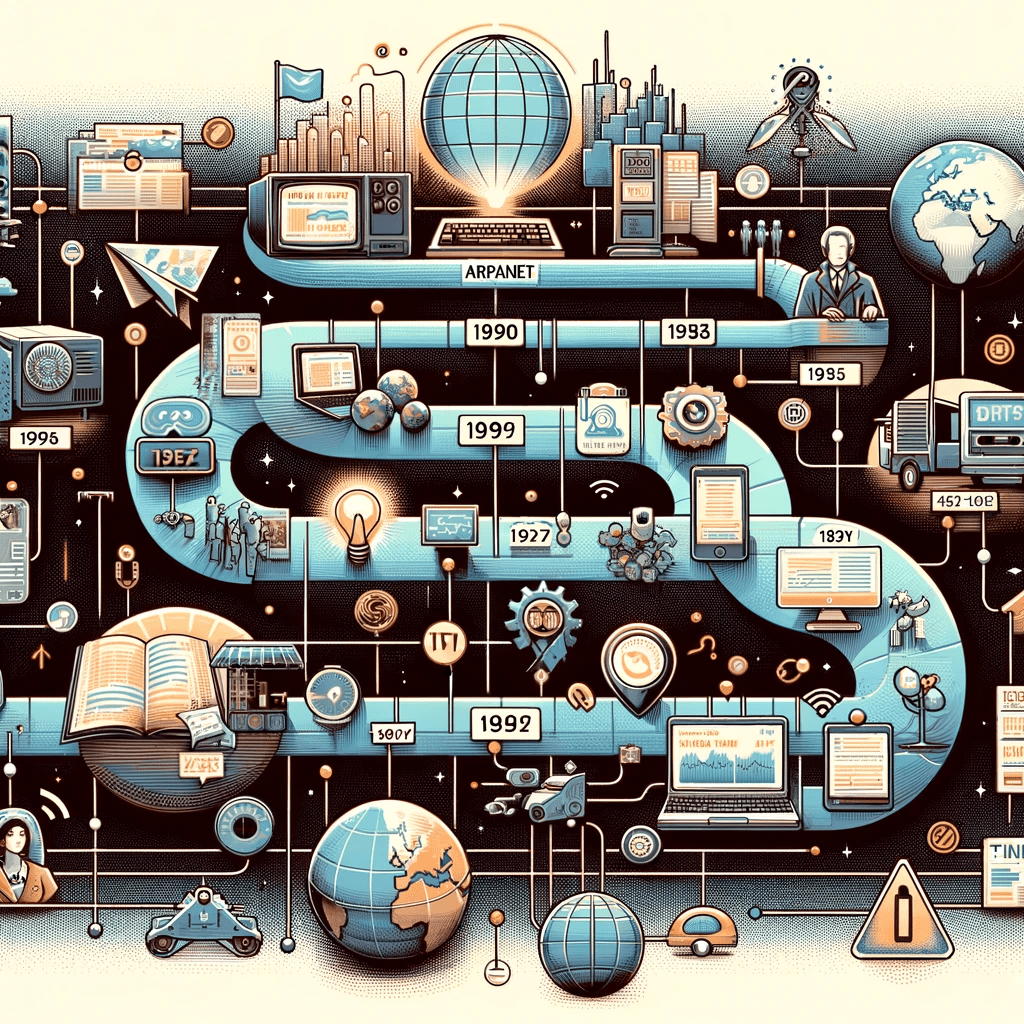Today’s lesson goal: Explore the key milestones in the history of the Internet.
The Internet, as we know it today, is the result of decades of innovation and collaboration. Its history is marked by significant milestones that shaped its development.
1950s-1960s: The Foundations
- Late 1950s: The concept of a global computer network was proposed.
- 1962: J.C.R. Licklider introduced the idea of an “Intergalactic Network”.
- 1965: The first wide-area network (WAN) was created, linking computers in Massachusetts and California.
1970s: Networking Takes Shape
- 1972: The ARPANET (Advanced Research Projects Agency Network), the precursor to the Internet, was publicly demonstrated.
- 1973: Development of TCP/IP (Transmission Control Protocol/Internet Protocol) began, laying the groundwork for internet connectivity.
1980s: Expansion and Accessibility
- 1983: ARPANET adopted TCP/IP, marking the birth of the Internet.
- 1985: The first domain name system (DNS) was implemented.
- 1989: Tim Berners-Lee proposed the World Wide Web (WWW).
1990s: The Web Explodes
- 1990: The first website was created by Tim Berners-Lee.
- 1993: The Mosaic web browser was released, making the web accessible to the public.
- 1994-1995: Major online services like Yahoo and Amazon were launched.
2000s: The Age of Social Media and Broadband
- 2004-2006: The rise of social media platforms like Facebook and YouTube.
- 2000s: Broadband replaced dial-up, significantly increasing internet speed.
2010s-Present: The Internet of Everything
- 2010s: The proliferation of smartphones and IoT (Internet of Things) devices.
- Ongoing: Advancements in cloud computing, AI, and 5G technology.
Each of these milestones represents a leap forward in
how we connect, communicate, and access information. The Internet’s history reflects a journey from a small network of interconnected computers to a global system that touches nearly every aspect of modern life.
Key Takeaways:
- Collaborative Efforts: The development of the Internet is a result of collaborative efforts across various fields and countries.
- Evolutionary Process: The Internet evolved through multiple stages, each building upon the previous ones.
- Societal Impact: The Internet has revolutionized communication, commerce, and information sharing, impacting society profoundly.
Challenges Faced:
- Security and Privacy: As the Internet grew, so did concerns about data security and user privacy.
- Digital Divide: The disparity in Internet access across different regions and socio-economic groups.
The history of the Internet is a testament to human innovation and collaboration. It’s an ongoing story of adaptation and advancement, shaping and being shaped by society.
